All About Watering Peppers
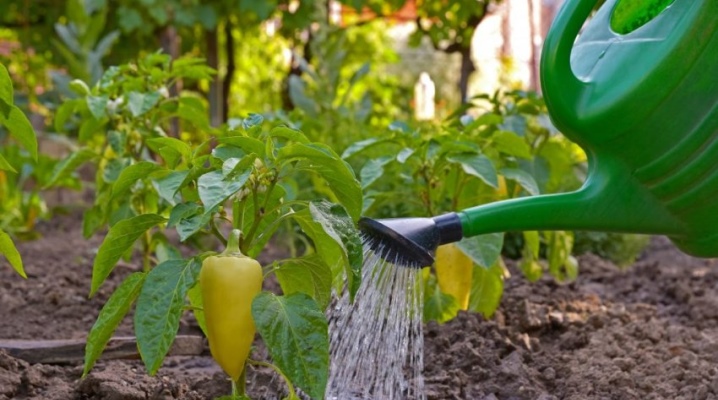
Watering peppers requires careful attention from gardeners - the plant is sensitive to moisture intake, needs its regular supply. Discussions often arise about how often and correctly this should be done. A detailed story about whether pepper loves watering over the leaves, it is better to carry it out in the morning or in the evening, will allow you to understand all the intricacies of the process.

How often can you water?
The frequency of watering peppers in the open field and in the greenhouse will be different. It is important to understand that it is not enough to apply moisture once a week. This plant hygrophilous, needs constant soil moisture. Starting to plant seedlings of bitter, hot or sweet bell peppers, it is necessary to provide them with decent care and nutrition.
Since the plant loves moisture, the soil underneath should not dry out. This can be achieved by following the basic recommendations. First of all, you should be guided by the weather. In addition, the phase of development of the plants is important, as well as the way the peppers are grown - in a greenhouse or in the open field. The standard frequency is from 3 to 7 days, in rare cases this figure increases up to 15 times a month, every other day.
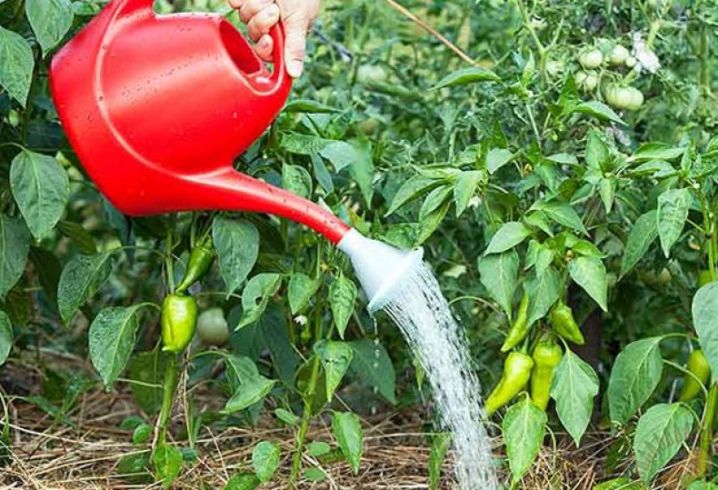
The termination of watering is carried out on the eve of the harvest. Usually in 10-14 days. This technique promotes the accelerated ripening of vegetables. If new ovaries form on the bushes during fruiting, watering is resumed.
Despite being hygrophilous, peppers are sensitive to adherence to water application rates. If this order is violated, one cannot count on a rich harvest.
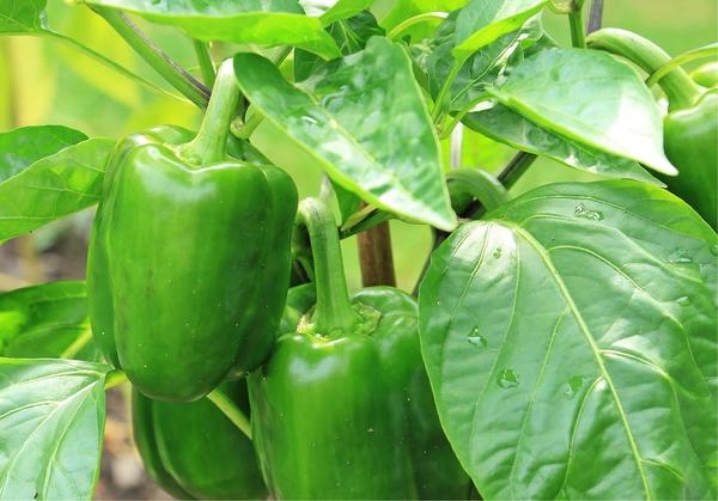
Waterlogging leads to the following negative consequences.
- Fall of ovaries and peduncles. Abundant watering leads to the fact that the soil surface turns into a dense, tough crust. It interferes with normal aeration. The root system, deprived of natural air exchange, does not supply enough nutrients. The stem of the plant grows stiff, the shoots wither, flowers and buds fall off.
- Increased risk of developing fungal diseases. With a decrease in atmospheric temperatures, waterlogging is especially dangerous. The emerging environment is favorable for the spread of fungal infections. In this case, it is important to monitor the health of the bushes, pay attention to the appearance of spots on the leaves.
- Attracting insect pests. Slugs grow in the soil. High humidity contributes to their active reproduction, and the availability of green mass of plants provides a fodder base.
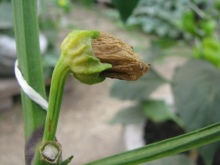
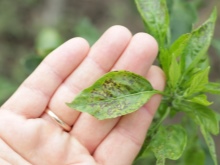
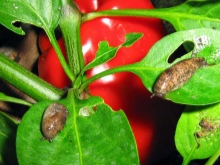
Excessive dryness of the soil also poses a danger to peppers. In this case, the plant can also shed its buds during the flowering stage. In addition, the resulting fruits will develop more slowly, will greatly lose in size.
What kind of water to use?
Watering peppers is always carried out only with clean water that does not contain chlorine, a large amount of mineral salts. The best choice is rainwater collected in barrels in the garden. Water from a pond or river is also fine. Do not water the peppers from the well. Cold water can harm them, provoking the development of diseases.
The optimum temperature of the liquid is in the range of 18-22 degrees. This will allow the plants to grow properly. Special heating is not needed if you place the irrigation container in a well-lit place that is exposed to prolonged contact with direct sunlight during the day.
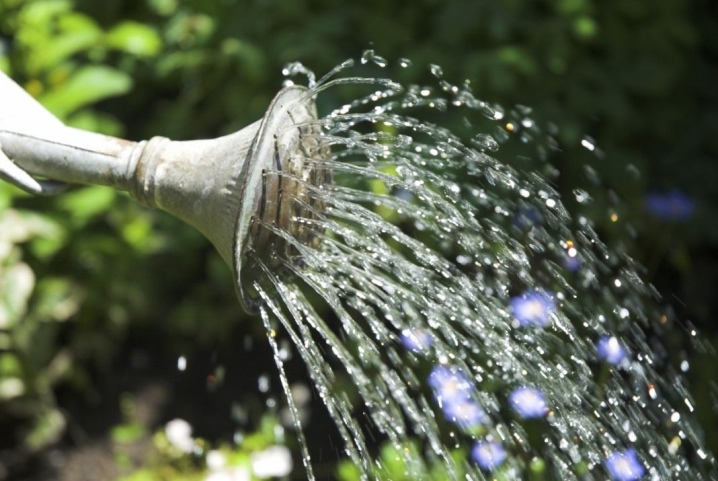
Watering time
It is better to organize watering so that the maximum amount of moisture is retained in the soil. Daytime hours are not suitable for this. The intense evaporation of the water will prevent the peppers from getting enough moisture at the roots. Watering should be carried out in the morning, before 7 o'clock, and also in the evening, when the main heat subsides.
But here, too, there are some subtleties. For example, with a significant difference between night and day temperatures, evening watering is more likely to harm the peppers than serve their favorable development. In this case, the plants are irrigated after 15-16 hours, but before sunset.

Watering methods
In order for the peppers to receive the required amount of moisture, watering must be properly organized. This can be done using various accessories. When choosing a suitable method, the method of growing plants, the area of the site, the presence and availability of moisture sources must be taken into account. Among the most popular options, it is customary to single out the following.
- Automated watering. It is produced using a controlled irrigation system. In this case, you can set and change the rates of water consumption, the frequency and duration of its supply. In the case of growing peppers in a summer cottage, such costs are advisable only in hot southern regions. For automation, you will need uninterrupted access to a source of water and electrical energy, the method is suitable for a large area of plantings, greenhouses.
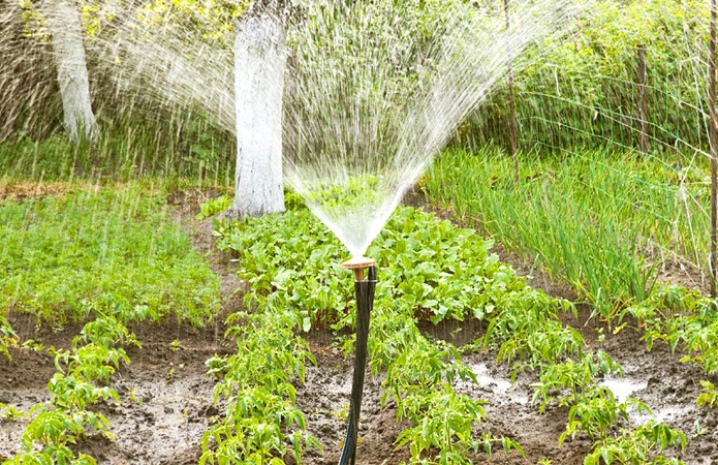
- Mechanized watering... It consists in the installation of drip irrigation systems or sprinklers with shut-off valves and a storage tank. By opening the tap, moisture can be supplied through the piping system. Drip irrigation has proven itself well in conditions of insufficient amount of water, it allows you to guarantee “targeted” flow of liquid into the root zone. Subsoil irrigation systems work best for peppers, but sprinklers can also be used.

- Manual watering. It consists in supplying moisture directly through the sprinkler of a garden watering can, which requires additional investment of time and effort. Manual watering is suitable for vegetable gardens with a heterogeneous composition of plants, where only 1-2 beds are allocated for peppers. In this case, the frequency and intensity of soil moisture directly depends on the efforts of the owner of the site.

When choosing a method for organizing watering of peppers, it is important to correlate labor costs and the availability of free time.
For greenhouse plants, it will be highly desirable to equip a drip irrigation system. With an irregular visit to the site, as well as during periods of departure, it is better to take care of the automation of the irrigation process. On a personal plot next to the house, you can also do with the manual introduction of moisture.
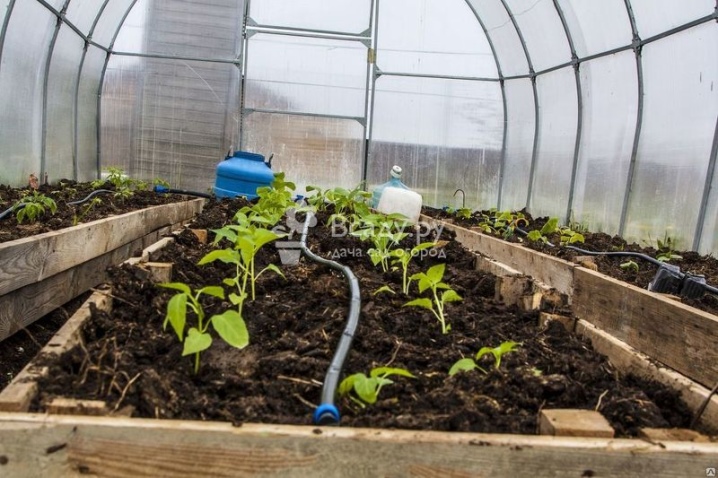
What should be considered?
You also need to be able to water the pepper correctly. From above, on the leaves, by sprinkling, the plants are irrigated only before flowering, exclusively in the morning and evening hours, so that the bright sunlight does not burn the delicate leaves. We also have to take into account the methods of growing plants. For example, in a pot on a windowsill, it is recommended to organize watering as follows.
- At low air temperatures, moisture is introduced no more than 1 time in 7-10 days.
- Seedling containers are more abundant irrigate from the side that is not facing the window glass... Here the soil dries out faster.
- Be sure to drain pots and containers to remove excess moisture. In the absence of holes, water will accumulate at the bottom, while the surface layer of the substrate will already dry out.
- At the stage of sowing seeds, watering is carried out using a spray bottle. Then the surface is covered with foil or glass, with daily ventilation. If the formation of condensation stops, it is necessary to repeat the spraying.
- Until the moment of picking, the seedlings continue to be irrigated by spraying (sprinkling). It is important that the substrate remains moist, but not damp. In the heat, spraying may be required 2 times a day.
- After diving, the seedlings are not watered for a while, until condensation ceases to appear on the shelter. Then the irrigation is combined with soil loosening. Watering should not be abundant.
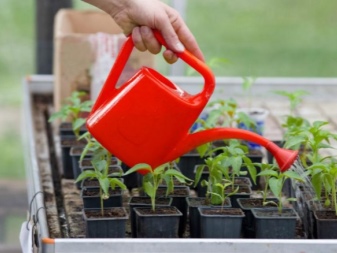
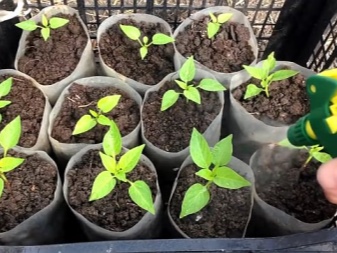
In a greenhouse, the soil moisture content of 60% is considered optimal. In such an environment, peppers develop normally. For 1 watering under the bush, 2 to 3 liters of water are introduced (up to 5 liters for tall varieties).
Season
Weather and fluctuations in atmospheric temperatures are what you have to pay attention to when organizing watering of peppers. In the heat, it is produced every other day, especially in the absence of precipitation. When the air warms up above +30 degrees, the soil is irrigated not only directly in the root zone, but also over the entire surface of the ridge. Do not force the rate of moisture application... The formation of puddles on the surface of the ridge can be considered a sign that watering is not happening correctly.
In rainy weather, plants in the open field do not require additional moisture. In order not to provoke the development of fungal diseases, watering is stopped. In the greenhouse, the peppers continue to supply water. In this case, it will be enough to irrigate 2 times a week, with a break of at least 3 days.
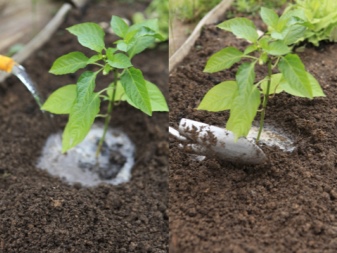
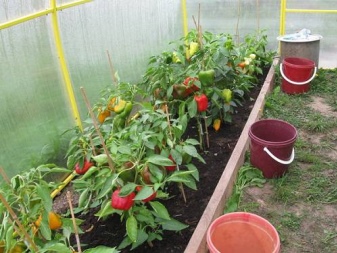
Development period
The choice of watering frequency is largely influenced by the phase of plant development. The main recommendations in this case will be as follows.
- After landing in the ground. During this period, you need to be careful when watering for several days. After planting, the plants take root in new conditions, a strong pressure of water can interfere with this process, and waterlogging will lead to rotting of the underground part of the seedlings. It takes 10-14 days to adapt, at this time watering should be daily, no more than 150 ml per bush.
- After rooting. After 10 days, the peppers can be transferred to the usual watering scheme - once a week. About 10 liters are introduced for each 1 m2 of area. With an increase in atmospheric temperatures, watering is performed every 3-4 days. This pattern is maintained until the formation of buds.
- During flowering... At this stage, the peppers need strict control over soil moisture; if there is a lack of water, they will simply shed their buds. During the flowering period, double weekly watering becomes mandatory, the consumption rates per 1 m2 are increased to 15 liters. Sprinkling cannot be used - it can negatively affect the flowers. Plants are transferred to completely manual or drip irrigation in the root zone.
- During fruiting... After ovaries appear on the bushes of peppers, the frequency of watering is limited to once every 3-4 days. 5-5.5 liters of water are added under each bush. During the period of fruiting and ripening itself, watering is carried out once a week.
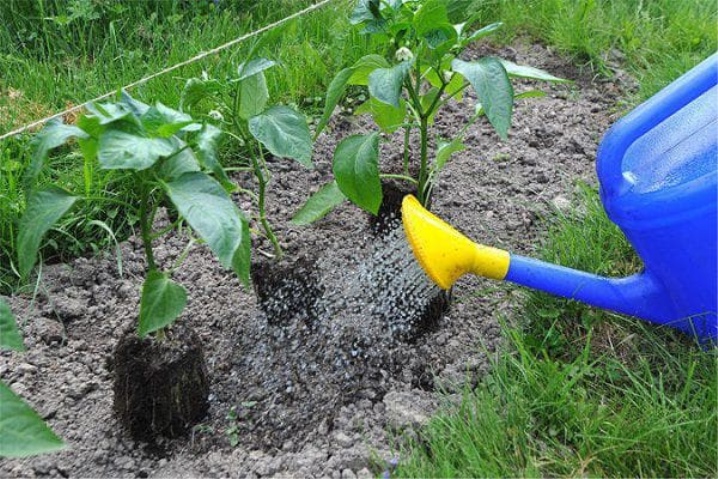
When organizing the supply of moisture to the beds with peppers, taking into account the development phase, it is important to pay attention to some nuances. For example, during the flowering period, the beds are irrigated after new buds open. During fruiting, it is worth focusing on the degree of soil moisture. It is enough to squeeze a handful of earth in a fist - crumbling particles indicate that it is time to water immediately.
Avoid drying out the soil will help timely loosening and mulching of the soil... You can use as a cover a dark film, peat or sawdust, laid in a layer of 5-10 cm.Watering is performed right on top of the mulch.
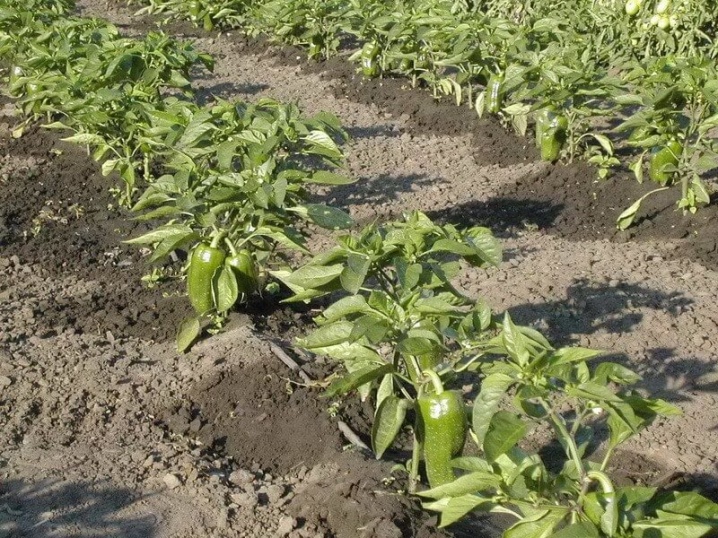
Combination with fertilization
All types of peppers respond well to feeding, which can be combined with watering. The fertilization schedule is fairly easy to create:
- 3 weeks after planting in the ground - during this period, the peppers are fertilized with a mixture of 10 g of calcium nitrate with 5 g of superphosphate per 10 l of water;
- during the period of bud formation - at this stage, 1 tsp is added to the water for irrigation. liquid potash fertilizers per 10 liters;
- at the end of the ripening period - watering in this case is done with the addition of 1 g of superphosphate and potassium salt.
You can also use additives to neutralize increased water hardness. For example, you can add about 3 g of citric acid for every 10 liters of water to the irrigation container.Peppers react well to liquid softened by ash - 1 tsp is enough. per liter. The same role is played by adding 100 g of peat to a bucket of water.
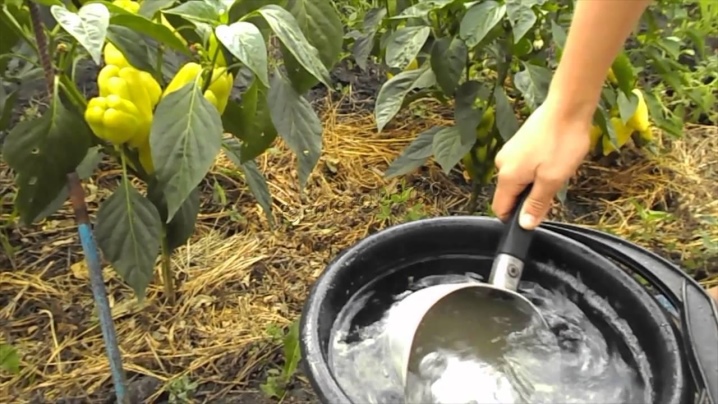
Milk whey is a universal fertilizer for fruit-bearing garden crops. It is prepared by curdling whole milk that has not undergone pasteurization and boiling. The resulting product contains lactose, which has a beneficial effect on the growth rate of deciduous mass. Also, whey is rich in amino acids necessary for peppers during periods of stress, after transplantation or temperature extremes.
Fertilizer is applied by spraying, according to deciduous mass, at the stage of growing seedlings. The whey is diluted with water in a ratio of 1: 5, filtered and sprayed... This is a good top dressing when growing peppers on windows on the north side, in low light conditions. In the open field, the method is used exclusively in dry weather.
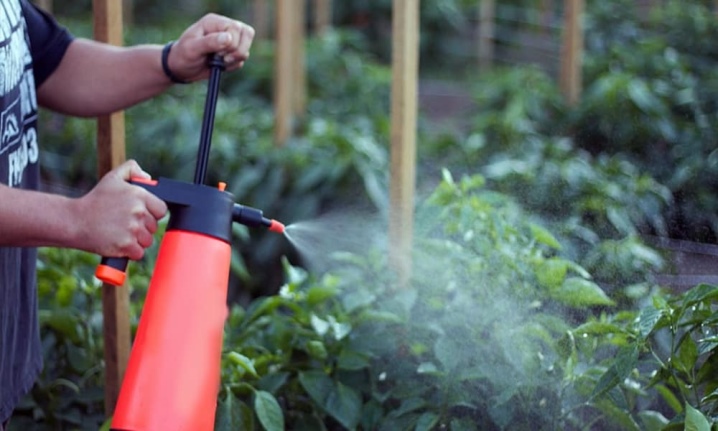
When growing peppers in a greenhouse, experienced vegetable growers often use hydrogen peroxide. This feeding option contributes to the saturation of the soil with oxygen, softens hard water. But when growing young peppers, this substance should be used with caution, strictly observing the dosage. As a growth stimulator, hydrogen peroxide is used at a concentration of 50 ml of a 3% solution per 1 liter of water. The mixture is applied in the morning or in the evening under the root of the seedling, in a volume of about 1 tsp.
Adult plants do not require such feeding. Seedlings are fertilized no more than 3 times during the period of their development. Also, hydrogen peroxide as a growth stimulant is useful for sick and weakened shoots.
It can also be used as a prophylactic agent, exclusively for disinfecting the soil before planting young peppers after picking.
All about watering peppers in the video below.













The comment was sent successfully.